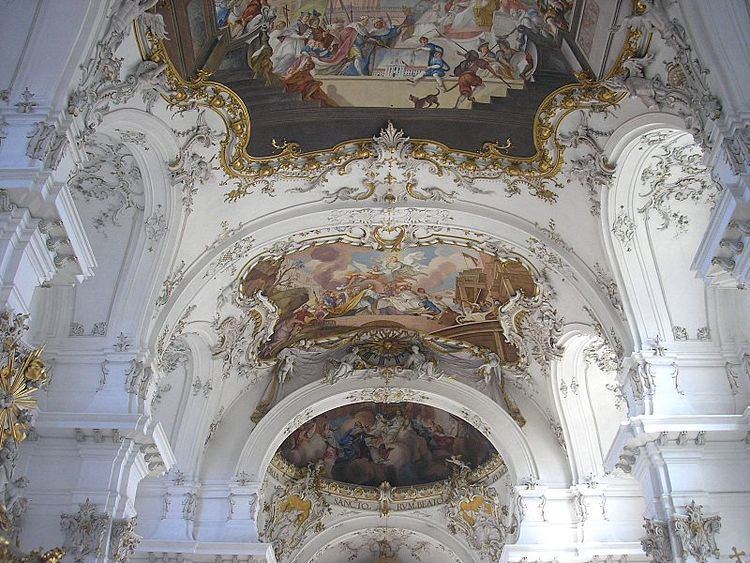Name Franz Feuchtmayer | ||
 | ||
Franz Xaver Feuchtmayer (the Elder) (1698–1763) was a German Baroque stucco plasterer of the Wessobrunner School.
Contents
Feuchtmayer was born in Wessobrunn, Bavaria. A member of the famous Feuchtmayer family, he was the son of Michael Feuchtmayer (b. 1667); the nephew of Franz Joseph Feuchtmayer (1660–1718) and Johann Michael Feuchtmayer (the Elder) (1666–1713); the older brother of Johann Michael Feuchtmayer (the Younger) (1709–1772); the cousin of Joseph Anton Feuchtmayer (1696–1770); and the father of Franz Xaver Feuchtmayer (the Younger) (b. 1735).
Feuchtmayer worked alongside his brother, Johann Michael Fischer, Matthaus Gunther, and Ignaz Gunther to create some of the most famous churches in Bavaria and Tyrol. His style has been variously described as "lavish," "delicate," and "vigorous."
